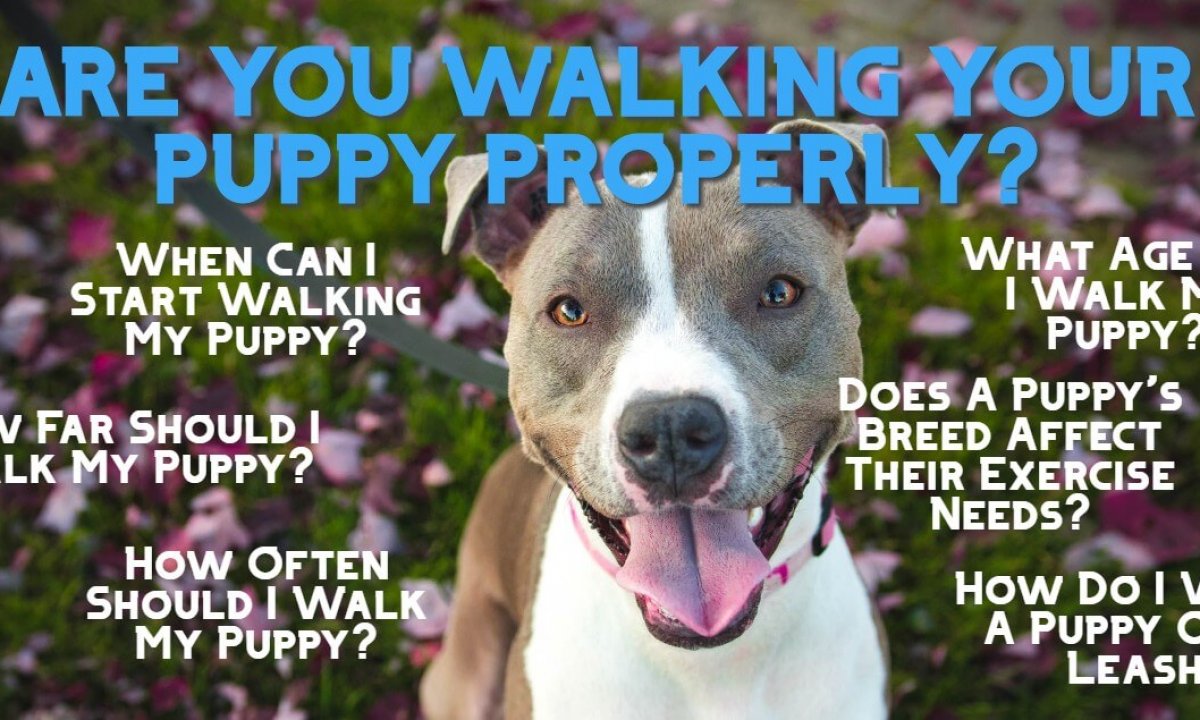Walking your dog should ideally be done for at least 30 minutes to an hour daily. The duration of the walk depends on your dog’s breed, age, and energy level.
Providing regular exercise helps keep your dog healthy, both physically and mentally. It also allows them to burn off excess energy and prevents boredom-related behavioural problems. Additionally, walking is an excellent opportunity to bond with your furry companion and strengthen your relationship.
However, it is essential to consider your dog’s needs and consult with your veterinarian if you have any specific concerns or questions about the ideal walking duration for your pet.
Determining The Right Walking Duration
When walking your dog, determining the suitable duration is essential. Like humans, dogs have different needs when it comes to exercise, and finding the right balance is crucial to ensuring their health and happiness. There are several factors to consider when determining the appropriate duration for your dog’s daily walk.
Considering Your Dog’s Breed And Age
Your dog’s breed and age play a significant role in determining how long their walks should be. Larger, high-energy breeds like Labrador Retrievers and Huskies typically require longer walks than smaller or low-energy breeds such as Chihuahuas or Bulldogs. Additionally, puppies and senior dogs have different exercise needs. Puppies have shorter attention spans and may tire more quickly, while older dogs may require gentler exercise to accommodate joint or mobility issues.
Taking Into Account Your Dog’s Energy Levels
Understanding your dog’s energy levels is another crucial factor in walking duration. Some dogs are naturally active and thrive on exercise, while others may have lower energy levels and prefer more relaxed walks. Suppose you have an active dog breed like a Border Collie or a Jack Russell Terrier. In that case, they may need longer walks or additional playtime to stimulate them mentally and physically. On the other hand, shorter walks may be sufficient if you have a less active breed, like a Basset Hound or a Pug. Please pay attention to your dog’s behaviour during and after walks to gauge whether the duration suits their energy levels.
Checking With Your Veterinarian For Specific Recommendations
Your veterinarian should be your go-to resource for specific recommendations regarding your dog’s walking duration. They will consider your dog’s individual health needs and any underlying conditions and provide you with expert guidelines tailored to your dog’s breed, age, and overall well-being. Consulting with your veterinarian ensures you are not over-exerting your dog or putting their health at risk during exercise.
In conclusion, determining the suitable walking duration for your dog involves considering their breed and age, energy levels and consulting with your veterinarian. By considering these factors, you can ensure that your dog receives the appropriate amount of exercise to keep them happy, healthy, and well-balanced.

Building A Walking Routine
Building a walking routine for your dog involves considering the optimal duration of their exercise. It’s essential to find the right balance of physical activity, typically 30 minutes to 2 hours, depending on your dog’s age, breed, and energy level.
Starting With Shorter Walks And Gradually Increasing Duration
When it comes to building a walking routine for your furry friend, starting slow and steadily increasing the duration of their walks is key. Just like humans, dogs need time to build up their stamina and endurance, so it’s important to ease them into longer walks gradually.
Begin by taking your dog on shorter walks, around 10 to 15 minutes, mainly if they aren’t used to regular exercise. A short stroll in the neighbourhood or a nearby park is a great starting point. Observe their behaviour during these shorter walks to gauge their comfort level and any signs of fatigue.
Once you notice that your dog is handling the shorter walks well, you can gradually increase the duration to around 20–30 minutes. Please pay attention to their energy levels and overall enthusiasm during the walk, as this will indicate whether they are ready for longer walks or need to stick to the current duration before progressing further.
Remember, consistency is vital when it comes to building a walking routine. Aim to take your dog for a walk at least once a day, ideally at the same time, to establish a healthy habit. This will provide regular exercise to keep them physically fit and support their emotional well-being.
Incorporating Daily Exercise Goals Into Your Routine
Setting and incorporating daily exercise goals into your routine is essential to ensuring your dog receives adequate exercise. Establishing a specific time for daily walks can help create a structured schedule for you and your pup.
Consider how much exercise your specific breed or individual dog requires. Some breeds, such as high-energy dogs like Border Collies or Dalmatians, may need more exercise than others. Consult your veterinarian to determine the ideal amount of exercise your dog needs.
Once you have an idea of your dog’s exercise requirements, you can set goals accordingly. For example, you might aim to walk your dog for a total of 30 minutes each day. Divide this time into multiple walks if needed, such as two 15-minute walks in the morning and evening.
Setting goals will not only help you track your dog’s daily exercise but also ensure that they get the physical activity necessary to stay in good health. Consistency is critical to achieving these goals, so prioritize your dog’s exercise routine.
Adding Variety To Keep Your Dog Engaged
To keep your dog excited and engaged during their daily walks, adding variety to their routine is essential. Like humans, dogs can get bored with the same old route or scenery, so mixing things up can make their walks more enjoyable.
Explore different routes in your neighbourhood or nearby parks. Not only will this provide a change of scenery for you and your dog, but it will also expose them to new smells and experiences, keeping their walks stimulating. Additionally, consider incorporating extra activities during their walks, such as playing fetch or allowing them to socialize with other dogs in a safe environment.
Introducing new terrain can also add excitement to your dog’s walks. Take them to a nearby beach or forested area for a change of pace. However, be mindful of the weather conditions and ensure it is safe for your dog to navigate these different terrains.
Varying the duration and intensity of the walks can also help keep your dog engaged. Occasionally, you can opt for longer walks or interval training, where you alternate between moderate walking and brisk jogging periods.
Remember, listening and adapting their walking routine is essential. With shorter walks and gradually increasing duration, incorporating daily exercise goals into your routine, and adding variety to keep your dog engaged, you can give them the exercise they need to lead a happy and healthy life.
Signs Of Overexertion Or Underexertion
Signs of overexertion or under-exertion in dogs include excessive panting, difficulty breathing, fatigue, muscle tremors, and a reluctance to continue walking. Finding a balanced exercise routine that suits your dog’s age, breed, and health condition is essential.
Walking your dog is not only crucial for their physical health but also for their mental well-being. However, it’s crucial to strike a balance and ensure you are not overexerting or underexing your pup. Understanding the signs of overexertion or under-exertion is essential to ensuring their safety and happiness. This article will explore how to recognize these signs and when to consult a professional.
Recognizing Signs Of Fatigue Or Exhaustion
Watching for signs of fatigue or exhaustion when taking your dog for a walk would be best. Dogs, like humans, can become tired and may exhibit symptoms that indicate they have reached their limit. Here are some signs to watch out for:
- Excessive panting: If your dog is heavily panting with their tongue out and cannot seem to catch their breath, it could be a sign of exhaustion. This is especially concerning if it persists for an extended period.
- Slowing down or lagging: If your dog starts to walk slower than usual, is dragging their feet, or appears reluctant to continue walking, it may indicate that they are becoming fatigued.
- Seeking shade or stopping frequently: Dogs often look for shade or stop frequently to rest if they feel tired or overexerted. Take note if your dog consistently seeks shade or insists on stopping more often than usual during your walks.
- Excessive drooling: While dogs naturally drool, excessive drooling can indicate fatigue or overheating. Keep an eye out for a massive amount of drool.
Identifying Signs Of Restlessness Or Behavioral Issues
On the other end of the spectrum, it’s important to recognize signs of restlessness or behavioural issues, which may indicate that your dog is under exertion. Dogs require regular exercise to burn off energy, and when they don’t receive enough physical activity, they may exhibit the following signs:
- Excessive barking or whining: If your dog seems restless and is barking or whining excessively, it could be a sign that they have pent-up energy that needs to be released through exercise.
- Destructive behaviour: Underexerted dogs can become bored and resort to violent behaviour, such as chewing furniture or shoes. This bad behaviour is often a cry for attention or a release of energy.
- Restlessness or pacing: If your dog is pacing around the house or seems unable to settle down, it may indicate that they are not receiving enough physical exercise to tire them out.
- Attention-seeking behavior: Dogs that are underexerted may constantly seek attention from their owners, nudging them, pawing, or engaging in other attention-seeking behaviors. They may become overly clingy or demanding.
Consulting A Professional If you notice Abnormal Behavior
If you notice consistent abnormal behaviour in your dog, it is essential to consult a professional. While some dogs may naturally have higher or lower energy levels, compatible signs of overexertion or under-exertion may indicate an underlying health issue or behavioural problem that needs to be addressed. A veterinarian or a professional dog trainer can provide valuable insights and guidance tailored to your dog’s needs. Do not hesitate to seek professional help to ensure your dog’s well-being and happiness.


Frequently Asked Questions For How Long Should You Walk Your Dog?
How Long Should You Walk Your Dog Each Day?
The recommended daily exercise for dogs is generally around 30 minutes to 2 hours, depending on the breed, age, and fitness level. Smaller breeds may require shorter walks, while more prominent and active breeds may need more extended periods of exercise.
How Often Should You Walk Your Dog?
On average, dogs should be walked at least once or twice a day. However, the frequency of walks may vary depending on the dog’s age, breed, health, and energy level. Tailoring the walking schedule to meet your dog’s specific needs is essential.
How Can Walking Benefit Your Dog’s Health?
Regular walks provide numerous health benefits for your dog. They help maintain a healthy weight, strengthen muscles and bones, improve cardiovascular health, reduce behavioural issues, stimulate the mind, and enhance socialization skills. Walking also allows your dog to explore and experience new environments.
Can You Over-exercise Your Dog By Walking Too Much?
Yes, it is possible to over-exercise your dog by walking too much, especially if they are not accustomed to high physical activity levels. Overexertion can lead to exhaustion, fatigue, muscle strain, or injury. Always monitor your dog for signs of fatigue and consult a veterinarian for appropriate exercise levels.
Conclusion
The duration of your dog’s daily walk is crucial for their physical and mental well-being. By considering factors such as breed, age, and energy level, you can determine the ideal length of their walks. Remember to increase the duration gradually to avoid overexertion.
Regular exercise through walking benefits your furry friend’s health and strengthens the bond between you both. Please keep your dog happy and healthy by finding the perfect balance in their daily walk routine.

